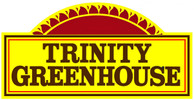Product Overview
Culture
Easily grown in average, medium moisture, well-drained soils in full sun. Tolerates some light shade. Tolerates a wide range of soils, but prefers sandy loams. Appreciates sites with good air circulation. This pine prefers cool summer climates and is not recommended for planting south of USDA Zone 7.
Noteworthy Characteristics
Pinus cembra, commonly called Swiss stone pine or arolla pine, is native to mountain areas in central Europe from the Alps to the Carpathians. It is a slow-growing, medium-sized pine with a narrow pyramidal shape in its youth, gradually becoming rounded and more open as it matures. It typically grows 30-40’ tall in cultivation, but will grow to 100’ tall in the wild in its native habitat. Soft, dark green to blue green needles (2-5” long) with white stomatic lines appear in bundles of five. Short-stalked, oblong cones (to 2.5” long) are greenish purple when young, maturing to purplish-brown. Cones never open. Cone seeds are edible. The pine nuts consumed as food in Europe primarily come from the stone pines, namely, this species and P. pinea (Italian stone pine).
Genus name comes from the Latin name for pines.
Specific epithet is the Italian name for this plant.
Problems
Healthy, well-maintained trees usually have few significant problems. Swiss stone pine has good resistant to blister rust. Potential disease problems include blights, rots, canker and rusts. Potential insect problems include caterpillars, borers, bark beetles, miners, scale, mealybugs and sawfly.








